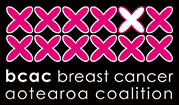In 2007, Australian and New Zealand women with ductal carcinoma in situ (DCIS) of the breast were invited to take part in a research study organised by the Trans Tasman Radiation Oncology Group (TROG). The study (BIG 3-07/TROG 07.01 trial) aimed to see whether improvements could be made to radiation treatment for these patients.
DCIS is most commonly treated via surgery to remove the part of the breast with DCIS, followed by radiation treatment. Radiation treatment has been shown to improve the chances of not developing further cancer in the affected breast. This study aimed to find an optimal radiation treatment regime for these patients.
In this study, the participants were assigned to any one of four treatments by a process of randomisation (i.e. treatment was selected by chance). Neither the participant nor their doctor was able to select the treatment. Two aspects of radiation treatment for DCIS were tested: the number of radiation treatments given (16 or 25), with or without an additional 'boost' radiation treatment to the part of the breast that had the DCIS.
The study treatment arms were as follows:
- 25 radiation treatments to the breast with no boost
- 25 radiation treatments to the breast, plus 8 boost treatments (a total of 33 treatments)
- 16 radiation treatments to the breast with no boost
- 16 radiation treatments to the breast, plus 8 boost treatments (a total of 24 treatments)
This study is ongoing (2023), but not recruiting new participants. In 2022 the main study findings to date were published in The Lancet. In a recent study summary, the researchers concluded that the boost treatment reduced the risk of recurrence and that the shorter course of whole breast irradiation (16 treatments) was as effective as the longer course. A final analysis of all results is planned for 2024.



